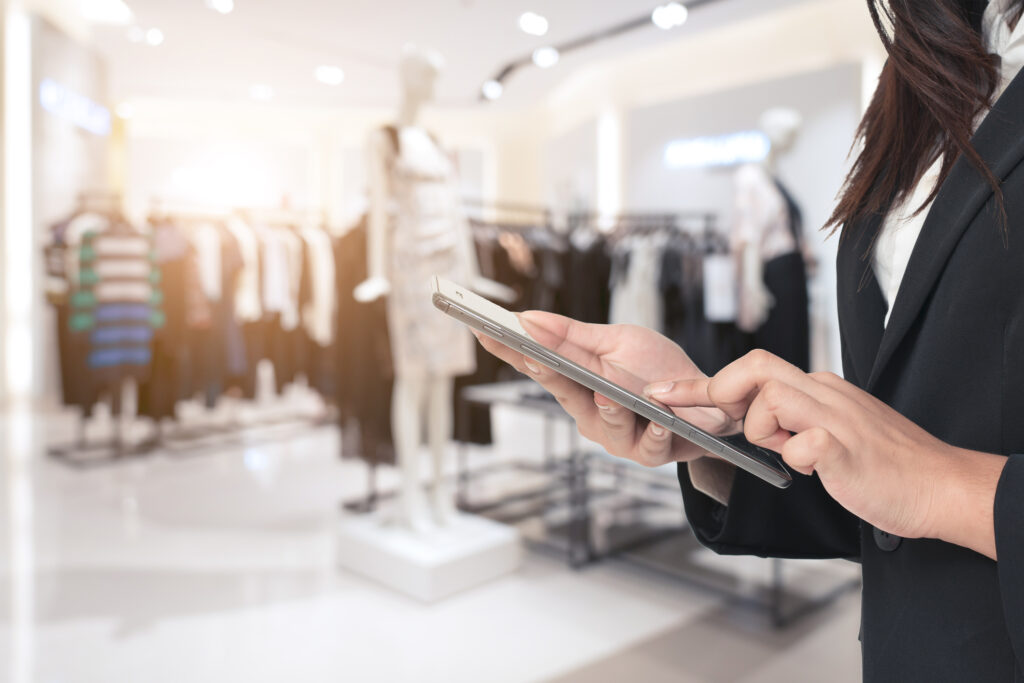As stores have reopened and life has some resemblance of what we know as ‘normal’, many retailers are fighting for customers in order to recover from lockdown periods and reduced consumer spending.
We’ve taken insight from some of our partners to understand what they are doing to help distinguish themselves in their sector and put together this list of current trends in retail.
Hygiene is now at the forefront of store processes, in particular in high volume retail and food service. The risks posed by COVID-19 along with the constant media attention highlighting the issue, means that businesses need to protect staff and customers not just for their wellbeing, but also due to PR. It’s a fine line however as a bakery chain in the UK was recently forced to shut down their social media and ecommerce store due the uproar of firing an employee for accepting cash from elderly customers.
Some new processes in stores are to quarantine cash and clothing after it’s been handled to reduce the risk of transmission. Regular cleaning of chip & pin machines and touchscreen devices is also common, as customers are more cautious with high contact surfaces.
Stores are implementing new technology to not only reduce touch points and to optimize cash handling, but also to enhance the customer journey. Virtual fashion booths which were previously thought of as a fad, are now the solution to avoid quarantining vast amounts of stock as customers try on clothes before purchasing. Many retailers are also implementing new payment systems, such as apps and contactless cash handling, in order to safeguard staff and customers.

Queuing is far more prevalent now, whether it’s to get into stores or to pay at the checkouts. With social distancing queues can stretch for quite a distance in store which can immediately deter shoppers. Many retailers now direct their store assistants to act as hosts to ensure that customers are queuing comfortable. They also serve to ensure shoppers understand the store’s policies prior to entering to help minimise any disruption to their retail experience.
Tools like google opening hours can be helpful here thanks to the AI automatically updating the busiest hours in different stores. For retailers again tech can play a big role here in implementing automated queuing systems and to streamline store processes.
At the peak of the health crisis, most stores had one-way policies throughout. Some stores still adhere to this, however in the majority of instances these are now ignored due to easing of lockdown restrictions and people’s eagerness for life to return to normal.
The in-store experience however is more than just a journey through the store, it’s how customers feel, it’s the atmosphere that the in-store teams create, and it’s also about maximizing the revenue per customers who step in. Many stores have re-examined their playlists in order to put customers in a more relaxed state of mind while shopping, due to the amount of adaption and disruption caused by new health & safety procedures.
Many of the more successful retailers and restaurants are also training their staff around emotional intelligence to help them bring to life the retail experience. Primark for example allocated their more outgoing sociable staff to hosting duties to help create a positive atmosphere as shoppers enter the store. A number of retailers are also incentivising retail staff to sell additional products at the checkouts in order to boost revenue.

Ecommerce has been the channel for an increasing portion of retailer’s sales over the last decade, and this has been accelerated due to COVID-19. In the US & Canada retailers are reporting 129% YoY growth in 2020 so far. We are also seeing similar trends throughout the UK and even Europe, where historically people would be less inclined to shop online and would go to stores instead. This number comes with no surprise due to draconian lockdowns implemented by regional governments. We are also seeing an increasing number of food service business who implement digital journeys via apps and their own websites to achieve more visibility to local customers.
What is key in this area is that established businesses have been experts at adapting to retail trends for in-person shoppers. They must now use that same expertise to adapt to a new generation of shoppers, who are more inclined to use online and digital journeys. Websites need to be slick, the operations and logistics elements need to be seamless, and easy access to customer service is key. The business that will struggle are those that have a large real estate footprint and need to consolidate in order to invest in other areas such as digital marketing, application development, and forget to put the customer first. Putting the customer at the forefront of every decision is one of the driving factors behind Amazon turning into a $1 trillion company.
With retailers being under pressure to drive efficiencies in every part of their business, investment into labor saving technologies is likely to increase. Reducing labour hours can be achieved with minimal investment. And whilst many retailers may be handling lower volumes of cash right now, cash handling remains an important yet labor intensive function for their business.
Deployment of cash handling equipment does not need to be complicated. A simple stand alone cash counter will pay for itself in just a few weeks. Adding a smart safe, such as the Tellermate LiveSafe to each checkout will also help reduce labor hours with the additional benefit of validating and securing cash at the point of sale, with zero integration required.